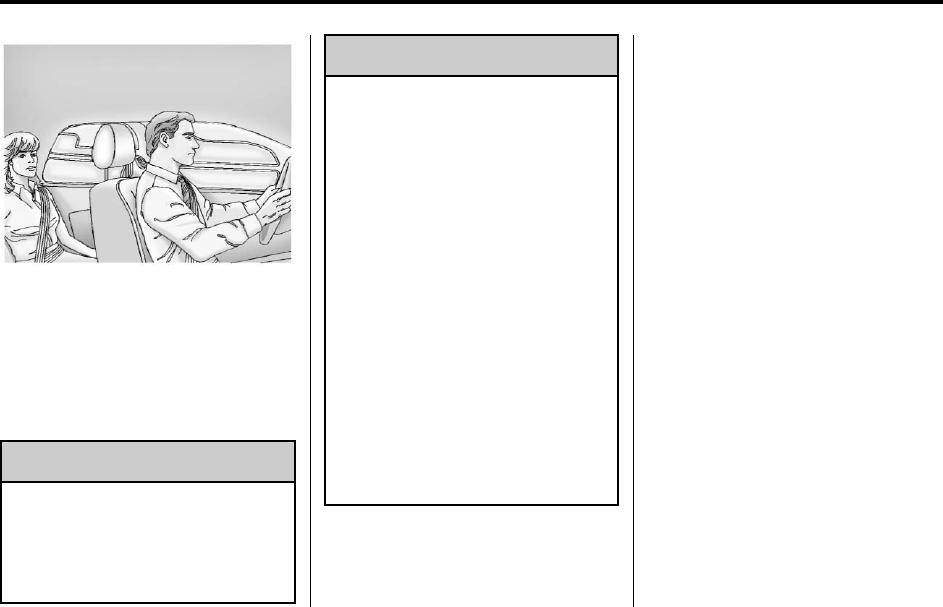
Black plate (33,1)
Cadillac CTS/CTS-V Owner Manual - 2011
Seats and Restraints 3-33
Driver Side shown, Passenger
Side similar
The roof-rail airbags for the driver,
outboard front passenger, and
second row outboard passengers
are in the ceiling above the side
windows.
{
WARNING
If something is between an
occupant and an airbag, the
airbag might not inflate properly
or it might force the object into
(Continued)
WARNING (Continue d)
that person causing severe injury
or even death. The path of an
inflating airbag must be kept
clear. Do not put anything
between an occupant and an
airbag, and do not attach or put
anything on the steering wheel
hub or on or near any other
airbag covering.
Do not use seat accessories
that block the inflation path of a
seat-mounted side impact airbag.
Never secure anything to the roof
of a vehicle with roof-rail airbags
by routing a rope or tie down
through any door or window
opening. If you do, the path of
an inflating roof-rail airbag will be
blocked.
When Should an Airbag
Inflate?
Frontal airbags are designed to
inflate in moderate to severe frontal
or near-frontal crashes to help
reduce the potential for severe
injuries mainly to the driver's or
outboard front passenger's head
and chest. However, they are
only designed to inflate if the
impact exceeds a predetermined
deployment threshold. Deployment
thresholds are used to predict how
severe a crash is likely to be in time
for the airbags to inflate and help
restrain the occupants.
Whether your frontal airbags will
or should deploy is not based on
how fast your vehicle is traveling.
It depends largely on what you hit,
the direction of the impact, and how
quickly your vehicle slows down.


















